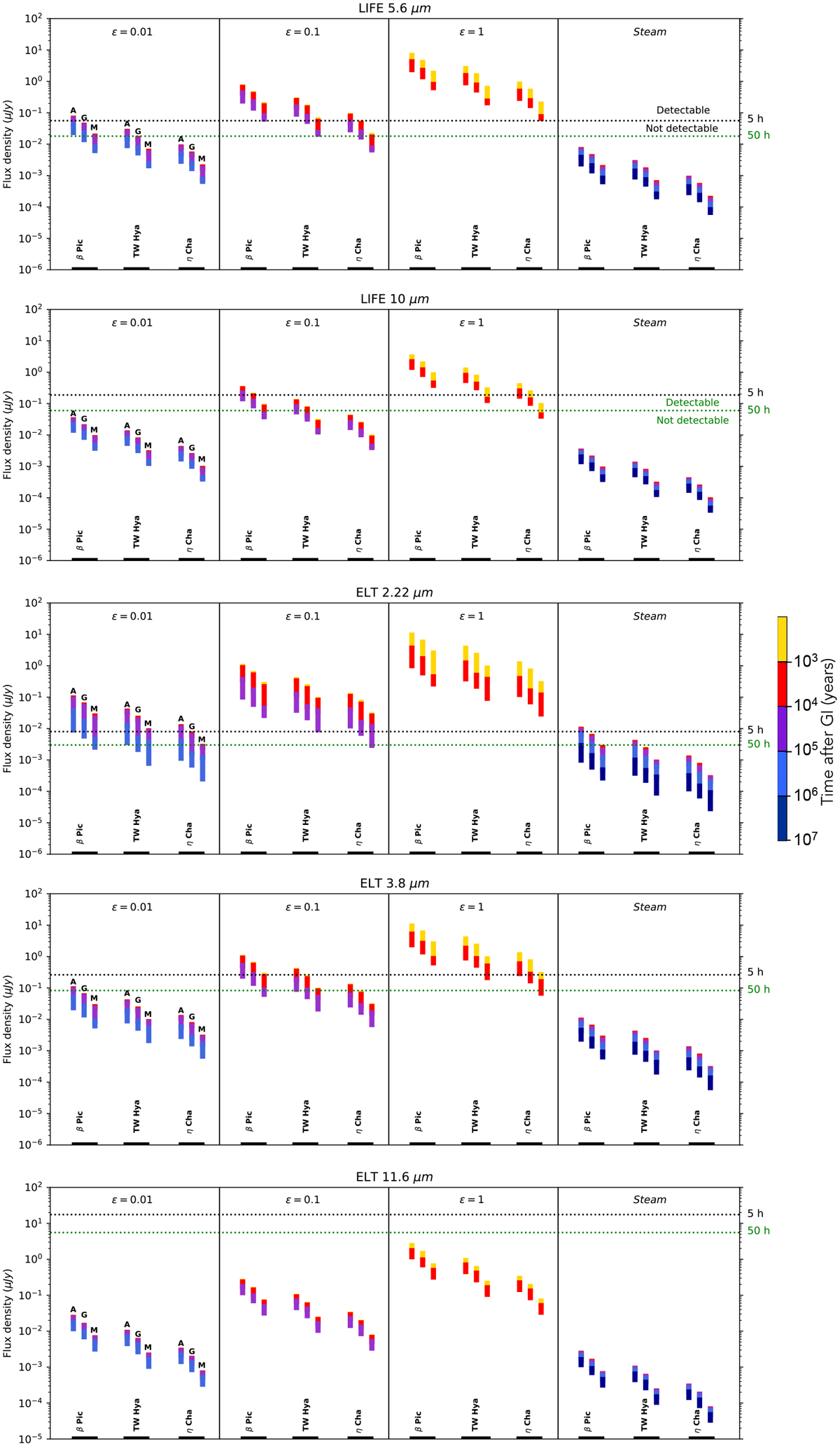Fig. 5

Flux density evolution for planets located within the β Pictoris (37 pc), TW Hydrae (53 pc), and η Chamaeleontis (94 pc) associations during the cooling of a magma ocean. The subplots and subplot panels indicate different telescope filter wavelengths and atmospheric emissivities, respectively. Each set of bars consists of flux evolutions for bodies located inside a given stellar association, orbiting central stars of different spectral type (A, G or M). The colors indicate different time intervals after the occurrence of a giant impact (GI). Each vertical bar terminates according to the cooling timescale of the magma ocean ΔtMO (see Figs. 3A and B). Planetary sizes used for the flux calculations are taken from the data in Fig. 2, based on the spectral type of the host star and the age of the considered stellar association. The black and green horizontal dashed lines mark the sensitivity of the telescope filters for integration times of 5 and 50 h (Table 2), respectively. Magma ocean bodies displaying fluxes greater than these thresholds are detectable.
Current usage metrics show cumulative count of Article Views (full-text article views including HTML views, PDF and ePub downloads, according to the available data) and Abstracts Views on Vision4Press platform.
Data correspond to usage on the plateform after 2015. The current usage metrics is available 48-96 hours after online publication and is updated daily on week days.
Initial download of the metrics may take a while.


